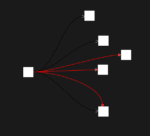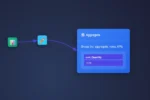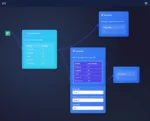This is an important step in creating a reliable and trustworthy visualization.
Collecting and cleaning your data is an essential step in creating effective and reliable data visualizations. This involves importing or entering your data into your data visualization tool, and ensuring that the data is accurate and complete.
To collect your data, you may need to import it from a file or database, or enter it manually into your data visualization tool. It is important to verify that the data is accurate and complete, and to correct any errors or missing values as needed. This may involve checking the data for inconsistencies, such as duplicates or outliers, and using data cleaning techniques, such as data imputation or outlier detection, to improve the quality of the data.
Once your data is collected and cleaned, you can then choose a chart type that is appropriate for the data you are working with, and that will effectively communicate the message you want to convey.
Depending on your data visualization expert is step one, also your data engineering consultant needs to be able to help you with your cleaning processes too!
This will typically involve selecting a chart type that is well-suited to the type of data you have, such as a bar chart for categorical data, or a scatter plot for numerical data. It is also important to consider the specific message or insight that you want to convey with the visualization, and to choose a chart type that will effectively communicate that message.
By collecting and cleaning your data and choosing the right chart type, you can create a reliable and effective data visualization that accurately represents your data and communicates your message. This is an important step in creating a trustworthy and effective visualization, as any errors or inconsistencies in the data can lead to misleading or inaccurate conclusions.
1. Prioritize Thoughtful Data Collection
- Capture What Matters: Focus on collecting data that directly ties to your business goals or analytical use case.
- Standardize Inputs: Use consistent formats (e.g., date formats, naming conventions) at the source to reduce downstream cleanup.
- Automate Collection: Leverage APIs, data pipelines, or forms to minimize manual input and reduce human error.
2. Data Cleaning: The Heart of Quality
- Remove Duplicates: Ensure each record is unique to avoid skewed results.
- Handle Missing Data: Decide whether to fill gaps using logical defaults, interpolation, or by excluding incomplete records.
- Standardize Formats: Align text casing, units of measure, and category names for consistency.
- Validate Accuracy: Cross-check data against trusted sources or benchmarks.
3. Ensure Completeness
- Audit Data Coverage: Identify missing records or categories essential to your analysis.
- Check for Outliers: Detect abnormal entries that may signal data entry errors or system issues.
4. Document and Monitor
- Record Cleaning Steps: Maintain logs of transformations to ensure transparency and reproducibility.
- Set Up Continuous Monitoring: Build alerts for data quality issues (e.g., missing fields, volume drops).
Final Thought: Garbage In, Garbage Out
No model or dashboard can compensate for bad data. Investing in proper data collection and cleaning processes upfront protects your decisions downstream—ensuring that insights you generate are both accurate and actionable.

























